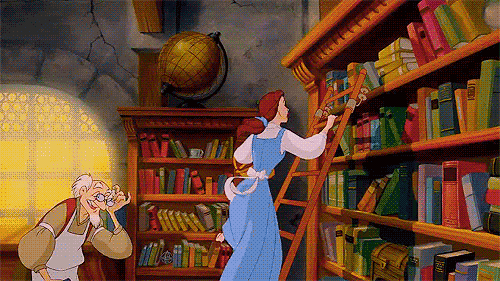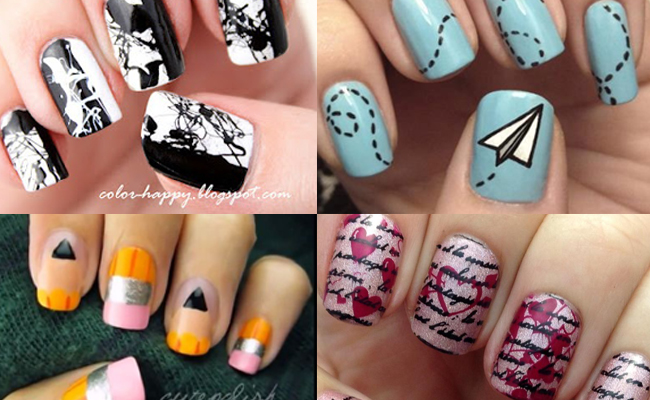(Image via)
Ask anyone who loves books what the single most important thing they can spend time doing is, and I’ll bet my Harry Potter novels that it will involve their bookcase. More specifically, organizing the contents of their bookcase.
For people who enjoy reading and love actual books (you know, the kind printed on dead trees), their bookcase is not just a piece of furniture, but something that they will spend an inordinate amount of time thinking about, analyzing and generally lose an entire day working on to get looking “just right”. Your bookcase is a reflection of you and who you are, and how your books are organized, what books you have, what authors you feature prominently all say something about you. And more than anything, you want people to stand in awe of your books and say “Man, nice bookcase.”
Thus, organizing your volumes is no easy matter. Are they mostly hardcovers? Paperbacks? Coffee table books? Should they be sorted according to theme? Subject? Author? Memories?Now imagine you have to add graphic novels and trade paperbacks to that, and it can give you a migraine that could make your head explode.
A lot of people who have recently begun buying comic book trade paperbacks and collections are looking at these things and thinking, “What the hell am I supposed to do with these? What do you mean there’s more than one volume of The Waking Dead? Should I even make room for them on my bookcase? Should I get a separate bookcase just for these? There are different sizes of books?” I’m lucky; I’ve been reading comic books for as long as I’ve been reading, so I’ve worked my graphic novel collection into my bookcase system. But for some of you, this is a whole new world.
Fortunately for you, I’m here to help.
The Rules
What follows are the six things you need to know when choosing, buying and organizing you graphic novels and trades. Just like the rest of your books, you want to be able to impress people with your collection. To do that, you need to know what mistakes to avoid and what to look for.
Read everything in your collection: This should go without saying. Never buy something because you feel like you should or because it’s the “hot” title of the moment, or even if you have heard it’s a classic and have been told everyone should read it. If you’re not a Batman fan, nothing will say poser like an unread copy of The Dark Knight Returns sitting on a shelf. If you don’t plan to read it, don’t buy it.
Only keep what you liked: Again, this should be fairly obvious. If you didn’t enjoy a novel you wouldn’t keep it and have it taking up precious real estate on your bookshelf, would you? No, you would ditch it. And the same goes for graphic novels. I don’t care what the book is; if you didn’t enjoy it, don’t keep it.
An example: As some of you probably know, Watchmen by Alan Moore and Dave Gibbons is considered by almost all fans to be one of the greatest comic book stories of all time. Do I own a copy? No, because I hated that book with a passion. Does that make me less of a fan? Nope, not at all.
Try to buy only hardcovers: Yes they’re more expensive. But they will hold up over time way better that softcovers, look better on your shelf and bring a hint of class to any collection. Now, a word of warning: most publishers, especially Marvel and DC, will publish collections that are a variety of sizes, some taller that others with more issues included. These “oversize” collections should be the ones you go after if they are available. The reason being that the artwork will look that much better on a larger page and usually the quality of book itself is better. Plus, they look wicked cool on a bookcase.
Make sure all the spines match: This is a pet peeve of mine. When I go to the trouble of buying a series of graphic novels, I want the spines to all line up like they’re a set, with volume numbers and the same look across all the books. This is the main reason I still don’t own Grant Morrison’s Invisibles in collections; the spines and cover treatments are just a mess.
Never alphabetize your graphic novels: Does anyone really alphabetize books (or anything else) anymore? It’s pedestrian, boring, and such a complete cop out. Plus, it would insult Rob Gordon’s sensibilities (extra credit to anyone who gets the reference).
Never, ever organize according to publisher: Most newcomers will go this route simply because it’s the easiest and most obvious, but I implore you not to. Just like your other books, put some thought into how you want your collection to look. If you do sort them according to publisher and a fanboy or fangirl sees it, expect them to look at you with a gaze of derision and say “Really?”. And no one wants that.
So there you have it; simple guidelines so that you can build and maintain a graphic novel collection that will be the envy of all your friends. Next time, some recommendations on what exactly to fill it with.
—






